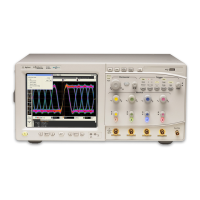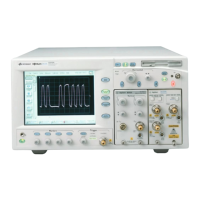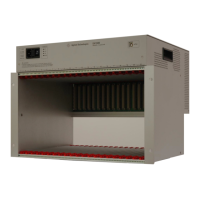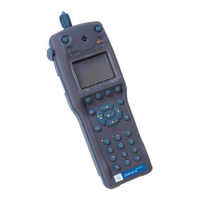Chapter 8: Theory of Operation
Acquisition Theory
153
Acquisition Theory
The acquisition system includes two major sections. One is the acquisition board, which
conditions, stores, and processes the input signals. The other is the A1 interface board, which
provides the interface from the acquisition to the motherboard and display, and also interfaces
the motherboard to the front-panel keyboard.
Acquisition Board
The acquisition circuitry samples, digitizes, and stores the signals for each channel. The trigger
signals synchronize acquisition through the trigger and time base circuitry. A reference oscillator
and the time base provide the base sample rates.
ADC The Agilent Technologies Infiniium Oscilloscope ADC provides all of the sampling,
digitizing, and high-speed waveform storage. Each ADC contains one 20 GSa/s ADC.
Trigger There are four main trigger circuits: Trigger Conditioning, Analog Comparators, a
Trigger Multiplexer, and Mixed Signal Trigger. Trigger signals from the channel are fed to
the analog trigger comparators and the trigger conditioning circuit. The trigger conditioning
circuitry selects low or high sensitivity modes and sets the trigger levels. The trigger
multiplexer selects the trigger modes, such as edge, glitch, and pattern trigger. The data
delay and clock delay timers are used to implement trigger functions that require timing
between 1.5 and 20 ns.
The channel triggers are sent to the Mixed Signal Trigger. The Mixed Signal Trigger provides the
advanced triggering functions, such as holdoff, delay, and pattern duration and range.
The auxiliary trigger, which cannot be displayed on screen, is compared to the trigger level setting
in a separate circuit.

